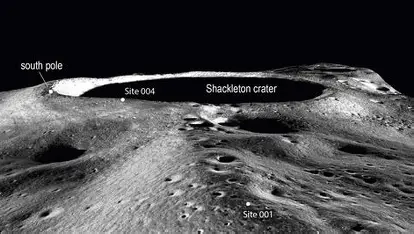Washington, October 16, 2025
Scientists have unveiled new findings about the Moon’s largest crater near its south pole, shedding light on its formation, composition, and potential significance for future lunar exploration. The research offers critical insights into the Moon’s geological history and could influence plans for human missions targeting the lunar south polar region.
The crater, spanning hundreds of kilometers across, has long intrigued astronomers due to its size, depth, and the presence of permanently shadowed regions that may harbor ice and other volatile compounds. Recent satellite observations, combined with advanced imaging and spectroscopy techniques, have revealed previously unknown details about the crater’s structure and subsurface composition.
Researchers report that the crater’s rim and interior contain an unexpected distribution of minerals and water ice deposits, suggesting that it may have formed from a unique combination of asteroid impacts and geological processes. This discovery challenges earlier models of lunar crater formation and indicates that the Moon’s south pole has undergone more complex geological evolution than previously thought.
The presence of water ice and other volatiles in these permanently shadowed regions is particularly significant for future lunar missions. Water can be used not only for life support but also to produce fuel, making the south polar region a strategic location for sustained human exploration and potential lunar bases. Scientists believe that understanding the crater’s composition will help guide landing site selection and resource utilization for upcoming missions.
In addition to implications for exploration, the study enhances our understanding of the Moon’s history. By analyzing crater formation and mineral distribution, researchers can infer details about the early solar system, asteroid bombardment patterns, and the evolution of planetary bodies. The data also provides a comparison point for similar craters on other celestial bodies, including Mercury and Mars.
The research team, which includes experts from multiple space agencies and universities, emphasizes that the findings underscore the importance of continued lunar observation and exploration. “Every new discovery about the Moon brings us closer to understanding not only our closest neighbor in space but also the processes that shaped our solar system,” said the lead scientist.
Future missions to the lunar south pole, including robotic landers and potential human expeditions, are likely to leverage this new knowledge to optimize scientific research and resource extraction. By mapping the crater’s interior and studying its ice deposits, scientists hope to uncover further secrets that could be crucial for sustainable exploration beyond Earth.



